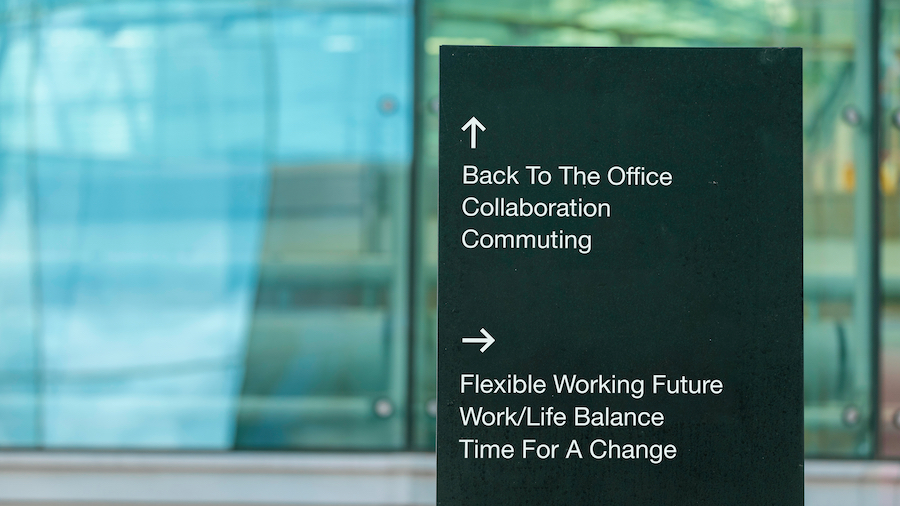Is Hybrid Work the Wave of the Future?

Since 2020 the phrase hybrid work has become a popular buzzword, alongside employee engagement, productivity, and the new normal. If you’re curious about how a hybrid work model can benefit your organization, continue reading — we’ve got the deets!
A hybrid work model is the perfect blend of on-site and off-site work models. It offers employees the flexibility and freedom to create a schedule that works best for them. Most companies that provide this type of work schedule expect employees to be in the office 2 to 3 days per week, allowing them to work from anywhere for the remainder of the work week. Let’s deep dive into the various benefits of a hybrid work arrangement and see why more companies are opting for this type of structure.
Hybrid Work Explained
Even though the work-from-anywhere ideology has taken the world by storm, it’s not always the culture managers and CEOs want to cultivate. However, many employers can’t deny that working remotely positively impacted employee satisfaction, retention, and productivity. This proved evident during the 2020 lockdown the world went into due to COVID. Thanks to technology, innovation, and remote work, many companies not only survived what could have been a devastating blow but also thrived.
The world at large was so happy with the work-from-home framework and the results it showed in all aspects of business that as we came out of quarantine, many employees were hesitant to go back into the office. However, the desire to stay remote was rebuffed by employers who wanted everyone back in the office, as had always been done. Out of this push and pull came the hybrid work model that truly is the best of both worlds.
How to Create a Hybrid Workplace
For many industries, a hybrid workplace is the best thing there is. It offers employees the flexibility they crave while allowing them to be most productive. It also gives employers the benefit of lower overhead expenses and various options that would not be available to them in a traditional work environment. There are industries where a hybrid model can’t be used, for instance, the manufacturing industry, as it involves physical labor and must remain an in-person industry. Whereas office work, busy work, and knowledge work can benefit from a hybrid work model. These industries can succeed with off-site employees due to technological advancements and platforms such as Zoom and Google Meets. With this technology readily available, the need for in-person communication no longer exists.
A hybrid work environment will vary from industry to industry and business to business in the same sector. For employees, the benefits are apparent. There is less time commuting, more disposable income due to the ability to work from home, and a better work-life balance. Employers’ main perk is lower overhead, which is the benefit driving this decision for many CEOs. You can let go of that expensive office lease when you scale down and shift to a virtual model. A virtual office is the perfect pairing for hybrid work. For the days when the team is in the office, many virtual offices offer meeting rooms for no added fee, and you get services, such as a receptionist and a prestigious business address for your company.
As with all things, there are minor drawbacks to switching to a hybrid work schedule. For one, it can be isolating when you work from home. The days when your office is your kitchen table may seem more intense as there is no office chatter or engagement with fellow employees to break up the day.
To successfully create a hybrid work model for your company, you must find the proper balance between on-site and off-site work. For companies making the switch, it’s best to phase in a hybrid work schedule over a few weeks or months. This allows everyone to adjust expectations and get used to their new schedule, allowing businesses to acquire the proper hardware and software necessary to take the leap and keep the transition seamless for employees.
One way employers can ensure a smooth transition and an uptick in employee output is to create environments that support micro-transactions. This means supporting small connections between colleagues. This allows them to discuss projects, exchange ideas, network, mentor, and coach. Since many companies have shifted to hybrid models, microtransactions have increased in work environments compared to just two years ago.
What Will Hybrid Work Look Like Moving Forward
The hybrid work model is here to stay, as we can see from the following statistics:
- Employees surveyed across various sectors showed that productivity and employee satisfaction is on the rise with a hybrid work model.
- One study showed an increase in overall customer satisfaction [80%] that aligns with higher employee engagement.
- McKinsey.com reported that employers quickly adapt and enjoy employee retention benefits.
The secret to a successful business begins with content, productive, and engaged employees. A hybrid work model offers many advantages that save both employer and employee time and money while allowing for increased productivity. One way to institute a hybrid workplace would be to use a virtual office and let go of the expensive cost of a physical office space. Opus Virtual Offices has over 650 locations nationwide and in Canada. Our full suite of services includes live call answers, inbound/outbound call transfer, digital mail sort, meeting rooms on demand, and more. If you’re considering adopting a hybrid work model for your business, give Opus VO a call so you can transition into the future!




























